10 Amazing Things We No Longer See In Pasig River

Pristine, majestic, and breathtaking. These are the adjectives used to describe Pasig River. But that was before people started dumping their wastes into the river. Today, the water is so dirty that one bucket from it would have been enough to wipe out the dinosaurs.
Also Read: 6 Things We No Longer See On Philippine Airplanes
So whatever happened to the once-alluring river that had inspired many an artist? Well, industrialization happened. And so were the drastic changes that came with it. Before we knew it, the entire river ecosystem went downhill in a manner that would have made our ancestors cry in disbelief.
But there’s still hope. There is, in fact, a foundation committed to bringing Pasig River back to life. And if that’s not convincing enough, perhaps these little-known facts about the river’s colorful past will make you want to clean it up. Pronto.
1. Crocodiles.

Once there was a Chinese man who didn’t believe in the Catholic god. As he was plying the waters of Pasig River one day, the Chinese man spotted a huge crocodile swimming towards his boat. Out of desperation, he prayed to San Nicholas for help. At that very moment, the crocodile turned into stone, and the Chinese man became a believer.
The Buwayang Bato is just one of many legends born in the historic river. But believe it or not, stories like this often have real-life references.
READ: Sta. Marta and the crocodile
True enough, history shows that crocodiles once wreaked havoc on the Pasig River. In his book Relacion de las Islas Filipinas, the Jesuit Fr. Pedro Chirino recounted how a 17th-century Filipino chief grappled with a 36-foot crocodile from the Pasig River.
The huge freshwater reptile was eventually killed, so was the “smaller” 15-foot monster they also caught and ripped open, revealing the gruesome mix of human bones and heads inside its belly.
2. Duck ponds.
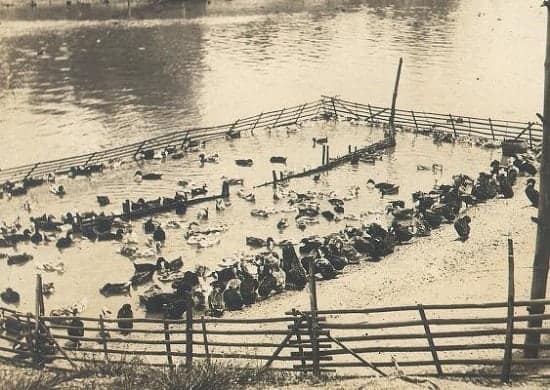
There was a time when ducks found the waters of Pasig River clean enough to drink and bathe in it. In fact, a community of duck raisers is said to have blossomed from the banks of the river. The business thrived for many decades, specifically in the areas of Pinagbuhatan and Kalawaan where many families relied on ducks for their bread and butter.
Related Article: 27 Things You’ll Only See in the Philippines
The 1903 Philippine census provides us with interesting details on how these duck farmers raised their animals:
“The breeding yards are fenced in with bamboo on the river banks and in these the full grown ducks are confined during the day; in another inclosure nearby the partially grown ducks are kept; and in a third the ducklings are kept, the latter being separated from their elders as soon as hatched. Not far from the duck yards are the duck houses, a separate house being provided for the young, the partially grown, and the full-grown ducks, to which they are trained to go, each class to its respective domicile, at sunset; and every morning at dawn they leave their houses in orderly manner and enter their proper yards with almost military precision.”
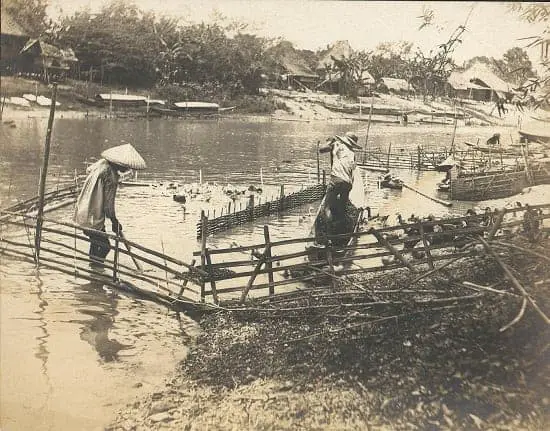
Sadly, it was the duck industry that took the biggest hit when the Pasig River deteriorated. Starting in the mid-1960s, river snails (“sambuele”) which were eaten by ducks became scarce–so was the unpolluted water necessary for these ducks to thrive.
One by one, duck raisers abandoned their business. And just like that, the industry that once provided thousands of Pasigueños with livelihood bid a final farewell.
3. Public baths.
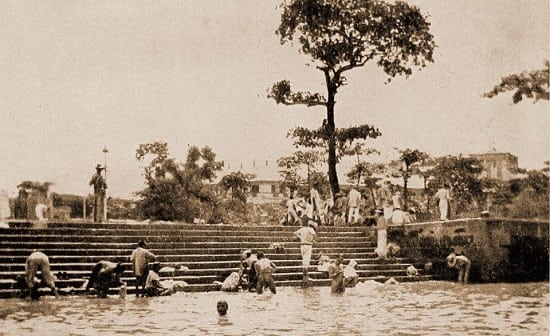
In India, bathing in the Ganges River is a holy ritual practiced by the Hindus. Although the river today is threatened by pollution, the water is tolerable enough for people to take a dip in it.
Our very own Pasig River used to be like this–a place where people could clean themselves and escape Manila’s sweltering heat.
Also Read: 29 Things You’ll Never See in Manila Again
Some Manileños even brought with them their four-legged companions. In the 1899 book A History and Description of Our Philippine Wonderland, Adjutant E. Hannaford paints a picture of Pasig River that was once teeming with life:
“Toward the evening parties of bathers, people of all ages and both sexes, multiply along the bank, or are already splashing about in the water with light-hearted glee. Great water-buffaloes with wide-spreading horns come singly or several together for the bath that rewards their afternoon toil in the fields or on the road.”
But as with other beautiful things that disappeared from Pasig River, public baths became extinct. By the 1950s, people stopped bathing in the polluted water.
Today, you can still see humans swimming in the biologically-dead river, but they’re either floating corpses or kids who have no idea what they’re getting into.
4. Salambaw.
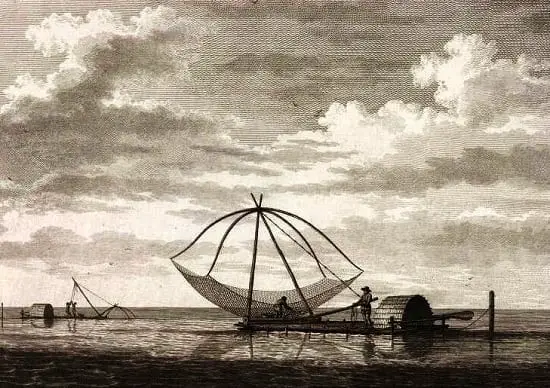
Back when fish were plenty, these bamboo rafts with weird-looking contraptions were a common sight in Pasig River. Old folks called it salambaw (or salambao), a traditional Filipino fishing raft composed of a giant net attached to long bamboo poles which were then fitted to the bamboo raft.
Also Read: 25 Amazing Facts You Probably Didn’t Know About Jose Rizal
In El Filibusterismo, our national hero Jose Rizal let his imagination run wild when he described salambaw as an “insecure fishing apparatus which in their movements resemble skeletons of giants saluting an antediluvian tortoise.”
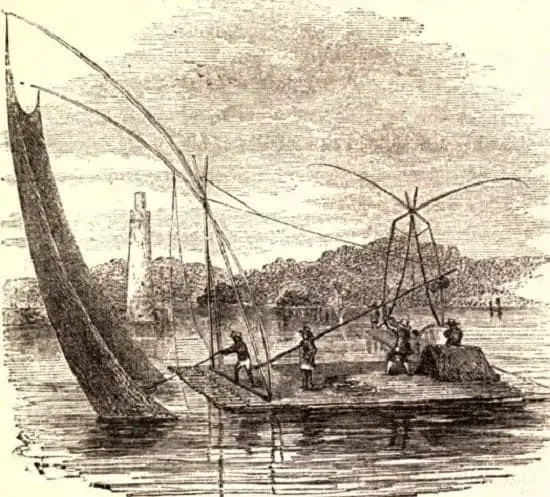
Odd as it may look, the giant net obviously made a lot of fishermen happy because it helped them catch more fish. In addition to that, the fishing contraption was set up in a way that made it easier to transfer it from place to place without the need to repeatedly spreading the net. All they needed to do was dip it into the river water and haul it up once it’s full of fish.
5. Houseboats.
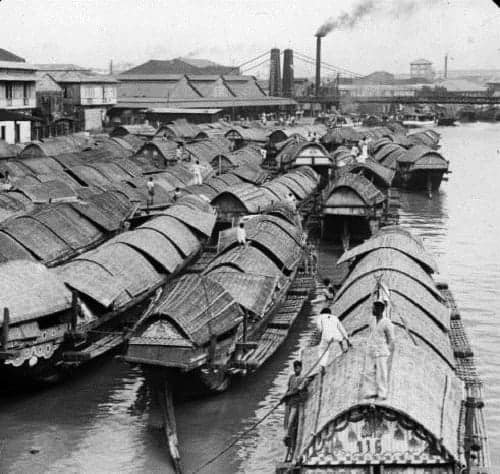
Anyone who has seen an old photograph of Pasig River should know what a casco looked like. It’s a flat-bottomed boat with a roof made of split bamboo or rattan. This traditional Filipino watercraft was used to carry freight and passengers throughout Manila and nearby provinces.
Also Read: 22 Things We No Longer See in Manila
Little-known, however, was that these boats also became home to thousands of Filipino families who spent all their lives in the river. In his 1919 book Interesting Manila, the American writer George A. Miller gives us a glimpse of how these river people made use of their floating houses:
“Over fifteen thousand people live on the cascos and lorchas that ply the waters of the river and its tributaries, all within the city limits. Thousands of children are born, grow, live and die on these floating cargo carriers, and never dream of any other world than that which floats about them and is towed from place to place…Like all seafaring aristocracy, these water dwellers have their quarters well aft, and the living apartments of the family are usually in the last section of the boat. A fire pot, a slat platform, a rice kettle and two roosters furnish the entire equipment for most of these floating habitations.”
6. Coconut rafts.
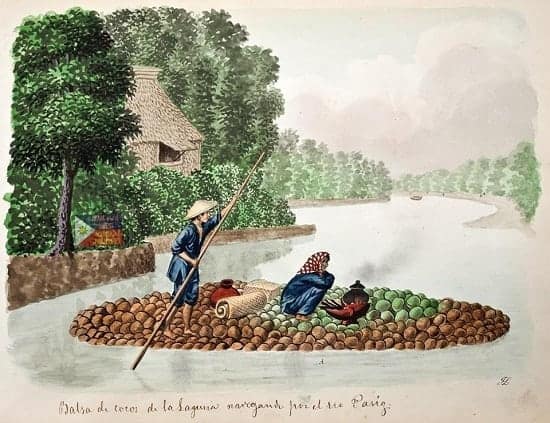
In the 19th century, people in Laguna and nearby provinces relied on Pasig River to transport their goods to Manila. They would usually fill their cascos with their produce, varying from rice, sugar, and vegetables to wine, molasses, and baskets of fruits.
Coconuts, however, were a lot heavier and came in larger quantities. A single casco was obviously not built to handle such cargo. Either they would deliver the coconuts via carabao carts or follow what others were already doing–make coconut rafts.
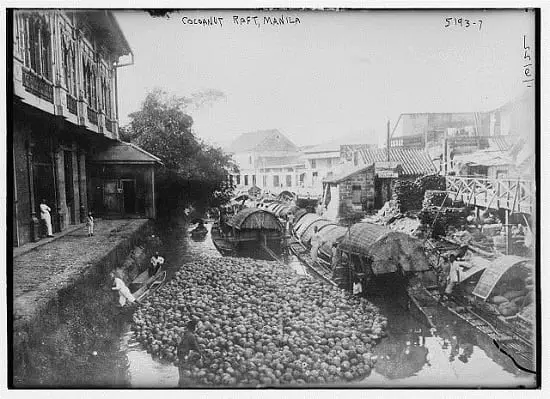
After forming a circular raft, the coconuts would float across Laguna de Bay and down to the Pasig River. With the help of estuaries throughout Manila, the coconut rafts would easily reach the mills where they’re processed into coconut milk and coconut honey, among other products.
Also Read: 20 Classic Filipino Toys That Will Make You Super Nostalgic
However, not all the time that these coconut rafts were reliable. In the end, it would all still depend on the weather. In 1906, for example, a strong typhoon in Laguna blew over the coconut rafts, scattering as much as 200,000 coconuts in the process.
7. People washing clothes.
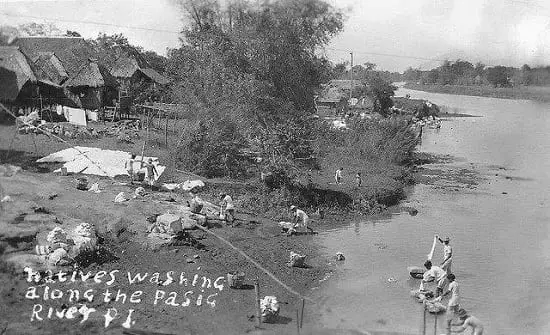
Pasig River not only provided people with a means to bathe themselves but also a place where they could wash their clothes.
As a result, signs of pollution had been evident in Pasig River as early as the 19th century. In 1850, for example, a Spaniard noticed that the river was slowly losing its pristine quality, partly because of rampant laundry washing by the natives. So that the water wouldn’t lose its potability, it was suggested to use sand and charcoal as a filtering method.
Also Read: Horrifying Facts That Get Left Out Of Philippine History
A hundred years later, the Pasig River could no longer keep up with the drastic changes taking place in Manila. By 1960, people stopped washing their clothes, which soon followed by the decline of ferry services.
8. Nila (Scyphiphora hydrophyllacea).

You’re looking at the picture of the plant from which Manila is said to have derived its name. Nila is actually the Sanskrit word for indigo. Eventually, nila became the name of the flowering mangrove that used to grow abundantly along the shores of Manila Bay and the banks of Pasig River.
READ: 12 Random Facts About Manila That Will Blow Your Mind
There was plenty of nila in the area that our ancestors reportedly named the city Manila, from the compound word “May-nila” meaning “there is nila.”
The nila shrub (Scyphiphora hydrophyllacea), which can grow up to 4 meters high, eventually died off as the toxic wastes slowly killed Pasig River.
Today, you can still see the almost-mythical plant in provincial areas, including Iwahig in Puerto Princesa, Palawan.
9. The original Pasig River lighthouse.
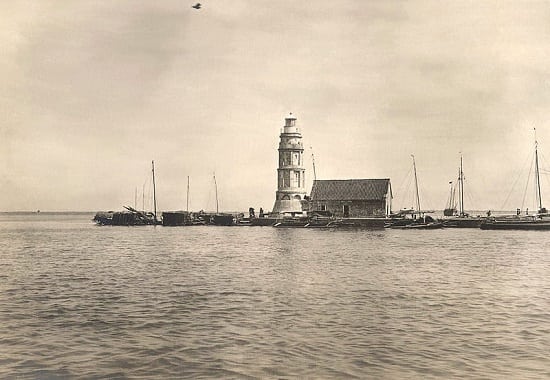
Built in 1846, the Pasig River Light had been an important and iconic landmark for almost 150 years. Measuring 49 feet tall, the original farola had both the Renaissance revival and Victorian architecture styles.
It’s also interesting to note that the five-story brick structure used to house a harpist, as revealed in the coffee table book Pasig:River of Life:
“In the days of silent sail-powered ships, the arrival of a schooner or any important vessel was greeted with celestial classics. It was heavenly sound that permeated even the thick walls of the bastion of Santiago, the fort that guarded the river’s mouth as the main garrison of Manila.”
Sadly, in 1992, the authorities finally got rid of the structure and replaced it with another lighthouse that is architecturally inferior.
READ: 20 Beautiful Old Manila Buildings That No Longer Exist
10. Elegant Spanish-era houses.

Manila’s canals and esteros used to be brimming with life. An endless line of cascos carrying freight and passengers populated the busy Pasig River, then considered the lifeline of the city.
READ: Fantastic 116-Year-Old Color Pictures of the Philippines
The city’s elites also preferred to build their luxurious summer homes and gardens along the river. No less than the presidential palace, Malacañan, was born on the banks of the river.
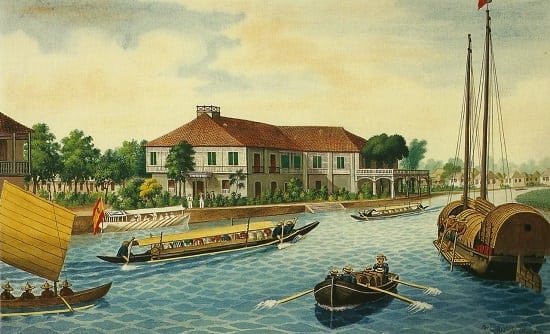
Paul de la Gironiere, a French doctor who spent many years in the Philippines, chronicled in his best-selling 19th-century travelogue some of the interesting observations he had of the fabled river:
“The newest and most elegant houses are built upon the banks of the river Pasig. Simple in exterior, they contain the most costly inventions of English and Indian luxury. Precious vases from China, Japan ware, gold, silver, and rich silks, dazzle the eyes on entering these unpretending habitations. Each house has a landing-place from the river, and little bamboo palaces, serving as bathing-houses, to which the residents resort several times daily, to relieve the fatigue caused by the intense heat of the climate.”
The elegant houses are no longer there, as the rich were replaced by the urban poor.
Some say that the status of the river is a reflection of the civilization that formed around it. I guess that only means we’re growing backward. Or are we?
Did You Know?
There are a lot of theories and myths that have attempted to explain how Pasig got its name. Among all these explanations, the one offered by anthropologist Dr. E. Arsenio Manuel probably is the most interesting.
Based on his analysis, the word Pasig was the combination of two monosyllabic root bases: the pas, which means “fast flow of water” (as in “pas-pas”); and ig, which is the Maguindanaon word for water. The latter is also part of some common Filipino words that are related to water, like tub-ig and ig-ib.
Therefore, it can be said that Pasig might have been used by our ancestors to refer to the fast flow of water and, eventually, the fast-flowing river itself.
References
Alejandro, R., & Yuson, A. (2000). Pasig: River of Life. Unilever Philippines.
Census of the Philippine Islands: Taken Under the Direction of the Philippine Commission in the Year 1903, in Four Volumes. (1905) (p. 131).
Chavez, L. (2009). Fast Facts: The Pasig of Lore. ABS-CBNNews.com. Retrieved 17 March 2016, from http://goo.gl/Y8wG9u
Coconuts in Laguna and Tayabas Province. (1908).
de la Gironiere, P. (1854). Twenty Years in the Philippines (1819-1839). New York: Harper & Brothers.
Ocampo, A. (2010). Looking Back. Mandaluyong City: Anvil Publishing, Inc.
Ocampo, A. (2014). Looking Back 8: Virgin of Balintawak (pp. 31-33). Mandaluyong City: Anvil Publishing, Inc.
Technology Review, Volume 34. (1932).
FilipiKnow
FilipiKnow strives to ensure each article published on this website is as accurate and reliable as possible. We invite you, our reader, to take part in our mission to provide free, high-quality information for every Juan. If you think this article needs improvement, or if you have suggestions on how we can better achieve our goals, let us know by sending a message to admin at filipiknow dot net
Copyright Notice
All materials contained on this site are protected by the Republic of the Philippines copyright law and may not be reproduced, distributed, transmitted, displayed, published, or broadcast without the prior written permission of filipiknow.net or in the case of third party materials, the owner of that content. You may not alter or remove any trademark, copyright, or other notice from copies of the content. Be warned that we have already reported and helped terminate several websites and YouTube channels for blatantly stealing our content. If you wish to use filipiknow.net content for commercial purposes, such as for content syndication, etc., please contact us at legal(at)filipiknow(dot)net
